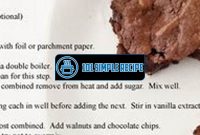Are you tired of spending a fortune on your daily cold brew coffee fix? Look no further, because we have the ultimate guide to help you master the cold brew coffee recipe ratio for the perfect brew. Cold brew coffee has gained immense popularity in recent years due to its incredibly smooth and rich flavor. By understanding the ideal coffee-to-water ratio, you can easily create a perfectly balanced and refreshing cold brew at home. ☕️ In this article, we will provide you with all the essential information and tips you need to know to become a cold brew connoisseur. So get ready to elevate your coffee game and enjoy an expertly crafted cup of cold brew coffee. ☕️✨

Understanding Cold Brew Coffee
Cold brew coffee has gained significant popularity among coffee enthusiasts in recent years. This unique brewing method offers a distinct flavor profile and a smooth, refreshing taste that sets it apart from traditional hot-brewed coffee. Understanding the basics of cold brew coffee can help you appreciate its unique qualities and even master the art of brewing it yourself.
What is Cold Brew Coffee?
Cold brew coffee is a brewing method that involves steeping coffee grounds in cold or room temperature water over an extended period, typically 12 to 24 hours. This slow and gradual extraction process allows the coffee to develop a rich and full-bodied flavor without the bitterness and acidity often associated with hot-brewed coffee. The result is a smooth, mellow brew that can be enjoyed either hot or cold.
Cold brew coffee is made using a higher coffee-to-water ratio compared to hot-brewed coffee. The typical ratio for cold brew is about 1 part coffee to 4 parts water, although this can vary based on personal preference and desired strength. Adjusting the coffee-to-water ratio allows you to customize the flavor profile according to your taste preference. If you prefer a stronger brew, you can increase the amount of coffee grounds used, whereas a milder brew can be achieved by using less coffee.
Benefits of Cold Brew Coffee
Cold brew coffee offers several benefits that contribute to its growing popularity. Firstly, its lower acidity levels make it easier on the stomach and less likely to cause acid reflux or heartburn. This is because the prolonged steeping process extracts the coffee’s natural oils and flavors while leaving behind some of the compounds responsible for acidity.
Additionally, the smooth and less bitter taste of cold brew coffee is often favored by those who find traditional hot-brewed coffee too strong or intense. The slow extraction process also highlights the coffee’s natural sweetness and reduces the bitterness, resulting in a more balanced and enjoyable flavor experience.
The Difference Between Cold Brew and Iced Coffee
It’s important to note that cold brew coffee is not the same as iced coffee. While both are served cold, they differ in terms of the brewing method and flavor profile. Iced coffee is made by brewing hot coffee and then cooling it down with ice, which can result in a more diluted taste. On the other hand, cold brew coffee is brewed using cold or room temperature water from the start, resulting in a stronger and more concentrated flavor.
To summarize, cold brew coffee is a unique brewing method that has gained popularity due to its smooth and mellow flavor profile. It is made by steeping coffee grounds in cold water over a long period, resulting in a low-acid and less bitter brew. Cold brew offers various benefits, including its stomach-friendly nature and balanced taste. Understanding the difference between cold brew and iced coffee is crucial to fully appreciate the distinct qualities of cold brew coffee. So why not try mastering the cold brew coffee recipe ratio and enjoy a refreshing cup of this delightful drink?
Importance of the Coffee-to-Water Ratio
When it comes to cold brew coffee, getting the right balance between coffee and water is crucial for a perfect brew. The coffee-to-water ratio plays a significant role in determining the flavor profile and overall quality of your cold brew. It’s not just a matter of taste preferences; the ratio can truly make or break your brewing process.
What is the Coffee-to-Water Ratio?
The coffee-to-water ratio refers to the amount of coffee grounds you use relative to the amount of water. It is typically expressed as a ratio, such as 1:4, which means one part of coffee to four parts of water. This ratio can vary depending on personal preferences, but it is an essential starting point for achieving the perfect cold brew flavor.
Effects of Different Ratios on Taste
Varying the coffee-to-water ratio can have a significant impact on the taste of your cold brew. If you use a higher ratio of coffee to water, let’s say 1:3, you will end up with a stronger and more robust brew. On the other hand, a lower ratio, like 1:5, will produce a milder and less intense flavor.
By experimenting with different ratios, you can fine-tune the taste to suit your preferences. Maybe you enjoy a bold and full-bodied brew, or perhaps you prefer a smoother and less concentrated coffee. Understanding the effects of different ratios will help you achieve the desired flavor profile.
How to Determine the Ideal Ratio for Your Taste
Finding the ideal coffee-to-water ratio for your taste may require some trial and error. Here’s a simple process to help you discover the perfect balance:
- Start with a 1:4 ratio as a baseline. This is a common starting point for many cold brew enthusiasts.
- Brew a small batch using this ratio and taste the result. Take note of the flavor and strength. Do you feel like it needs more or less coffee?
- If the brew is too strong or bitter, try increasing the water-to-coffee ratio. Gradually add more water until you achieve your desired taste.
- If the brew is too weak or lacking flavor, decrease the water-to-coffee ratio. Add more coffee grounds to enhance the strength and flavor.
- Continue adjusting the ratio until you find the perfect balance that suits your taste buds.
Remember that everyone’s taste preferences are unique, so what works for others might not work for you. Don’t be afraid to experiment and tweak the ratio until you find your cold brew nirvana.
Important note: It’s important to maintain consistency once you find your ideal ratio. Use a kitchen scale to measure the coffee and water accurately. This will ensure that you can consistently replicate your perfect brew in the future.
Mastering the coffee-to-water ratio is a key step in reaching cold brew perfection. By understanding the effects of different ratios and experimenting with your own taste preferences, you can create a brew that satisfies your coffee cravings every time. So grab your favorite beans, find that ideal ratio, and start brewing your way to cold brew bliss! ☕
Ranch oyster crackers recipe is a tasty snack option.
Factors Influencing the Coffee-to-Water Ratio
When it comes to crafting the perfect cold brew coffee, the coffee-to-water ratio plays a crucial role in determining the flavor and strength of your brew. The ideal ratio is a delicate balance that can be influenced by several factors. By understanding these factors, you can take control of your cold brew recipe and create a delicious and refreshing beverage every time.
Bean Roast Level and Grind Size
The roast level and grind size of your coffee beans can significantly impact the coffee-to-water ratio. Darker roasts tend to have a stronger flavor profile, which means they require less coffee grounds to achieve the desired strength. On the other hand, lighter roasts have a milder taste and may require more coffee grounds to achieve the same level of flavor.
In terms of grind size, a finer grind allows for a faster extraction rate. This means that you may need to use less coffee grounds when using a fine grind. Conversely, a coarser grind requires more coffee grounds to achieve the same level of extraction. Experimenting with different roast levels and grind sizes will help you find the perfect balance for your cold brew.
Brewing Time and Temperature
The brewing time and temperature also play a vital role in determining the coffee-to-water ratio. The longer you steep your coffee grounds, the stronger the flavor will be. If you prefer a milder brew, you may want to steep for a shorter duration. Similarly, brewing at a higher temperature can result in a faster extraction and a stronger flavor.
It is recommended to steep your cold brew coffee for at least 12 to 24 hours in the refrigerator. This extended steeping time allows for maximum flavor extraction and results in a smooth and delicious brew. However, you can always adjust the brewing time and temperature based on your personal preferences.
The Type and Quality of Water
Believe it or not, the type and quality of water you use can have a significant impact on the coffee-to-water ratio. The mineral content, pH level, and overall taste of the water can affect the flavor of your cold brew coffee. Using filtered or bottled water can help ensure a clean and consistent flavor profile.
Additionally, the coffee-to-water ratio may need to be adjusted slightly depending on the water you are using. If your water has a high mineral content or tastes particularly strong, you may want to use a slightly higher coffee-to-water ratio to balance out the flavors. Conversely, if your water is soft or lacks in taste, you may want to use a slightly lower ratio to enhance the flavor of your brew.
By paying attention to the bean roast level, grind size, brewing time and temperature, as well as the type and quality of water, you can master the cold brew coffee recipe ratio. Remember to experiment and fine-tune your ratio based on your personal taste preferences. With practice, you will perfect your cold brew recipe and be able to enjoy a delicious and refreshing coffee beverage every time.
The Perfect Cold Brew Recipe
Creating the perfect cold brew coffee requires precision and attention to detail. By following the right coffee-to-water ratio and considering other essential factors, you can achieve a smooth and flavorful cold brew that will satisfy your caffeine cravings. In this article, we will guide you through the step-by-step process of making the perfect cold brew coffee.
Selecting the Right Beans and Grinding Them
The key to a great cold brew starts with selecting the right beans. For a smooth and well-rounded flavor, opt for medium to dark roast beans. These beans have a richer taste that pairs perfectly with the cold brewing process. Additionally, choose beans that are specifically labeled as “cold brew” or “coarse grind” to ensure they are suitable for this brewing method.
Once you have your beans, it’s time to grind them. Investing in a quality burr grinder is highly recommended to achieve a consistent coarse grind. The ideal grind size for cold brew is similar to that of raw sugar or coarse sea salt. Grinding the beans too fine can result in over-extraction and a bitter taste in your cold brew.
Measuring Properly for Consistency
Measuring the coffee and water accurately is crucial for consistency in your cold brew. To master the cold brew coffee ratio, use a scale to measure the ingredients precisely. The recommended ratio is 1 part coffee to 4 parts water. This ratio provides a well-balanced and concentrated cold brew.
For example, if you use 100 grams of coarsely ground coffee, you would need 400 grams of cold, filtered water. Adjust the measurements according to your desired batch size, ensuring you maintain the 1:4 ratio.
Brewing and Straining Techniques
Now that you have your coffee and water measured, it’s time to start the brewing process. Combine the coffee and water in a large container, ensuring all the coffee grounds are fully saturated. Use a spoon or spatula to gently stir the mixture, ensuring even extraction.
Once the coffee and water are combined, cover the container and let it steep at room temperature for 12 to 24 hours. The longer you steep the mixture, the stronger and more intense the flavor will be. Experiment with different steeping times to find your perfect balance.
After the steeping period, it’s time to strain the cold brew. Use a fine-mesh sieve or a coffee filter to separate the liquid from the grounds. This additional straining step ensures a smooth and sediment-free cold brew. You can repeat the straining process if desired for an even cleaner result.
Congratulations! You have mastered the cold brew coffee recipe ratio and the essential techniques for creating a perfect cold brew. Enjoy your refreshing and delicious cold brew coffee in the comfort of your own home!
Punch bowl recipe is perfect for parties and gatherings.
Experimenting with Cold Brew Variations
When it comes to cold brew coffee, the possibilities are endless. You can elevate your coffee experience by experimenting with exciting variations and additions. Whether you want to add a burst of flavor or try out different brewing vessels and techniques, there is something for everyone. So, let’s dive into the world of cold brew variations and take your coffee game to the next level!
Flavored Syrups and Extracts
If you’re looking to add a touch of sweetness and unique flavors to your cold brew, flavored syrups and extracts are the way to go. These little additions can transform your regular cold brew into a delightful treat. From classic vanilla and caramel to more adventurous options like hazelnut or peppermint, the choices are endless.
Add a splash of vanilla syrup to your cold brew for a smooth and indulgent flavor.
Experiment with fruity syrups like raspberry or strawberry for a refreshing twist.
For a nutty and rich taste, try adding a dash of almond or coconut extract.
Different Brewing Vessels and Techniques
Changing the brewing vessel and technique can have a significant impact on the taste and texture of your cold brew. If you’re tired of the traditional mason jar method, here are some exciting alternatives to consider:
- Coffee Bag: Use a coffee bag specifically designed for cold brew to simplify the brewing process and minimize cleanup. It allows you to steep the coffee grounds without any mess.
- ☕️ French Press: Repurpose your trusty French press for cold brew. Just add coarsely ground coffee and water, let it steep overnight, and plunge in the morning for a smooth and robust cold brew.
- ⏳ Slow Drip Tower: If you’re a true coffee enthusiast, invest in a slow drip tower. This apparatus uses a slow and controlled dripping process to extract the flavors from the coffee grounds, resulting in a nuanced and complex cold brew.
Iced Coffee Recipes Using Cold Brew Concentrate
Now that you have mastered the cold brew coffee ratio, put that concentrate to good use by creating delicious iced coffee recipes. Cold brew concentrate is the perfect base for refreshing and flavorful iced coffee beverages. Here are a few recipes to get you started:
- Coffee Float: Pour cold brew concentrate over a scoop of your favorite ice cream for a simple and indulgent treat.
- Cold Brew Mojito: Mix cold brew concentrate with lime juice, mint leaves, and a splash of soda water for a refreshing twist on a classic mojito.
- Mocha Frappuccino: Blend cold brew concentrate, milk, cocoa powder, and ice for a decadent and icy mocha frappuccino.
Note: Feel free to adjust the ratios and ingredients based on your personal taste preferences. Don’t be afraid to get creative and come up with your own unique cold brew concoctions!
With all these cold brew variations and recipes at your fingertips, you’re ready to embark on a coffee adventure. Remember, the perfect cold brew is just a few experiments away, so get brewing and let your taste buds explore the world of flavors!
Weight loss recipe can be a great way to maintain a healthy lifestyle.
Frequently Asked Questions
Here are some frequently asked questions about the cold brew coffee recipe ratio:
| No. | Questions | Answers |
|---|---|---|
| 1. | What is the ideal ratio for making cold brew coffee? | The ideal ratio for making cold brew coffee is 1 part coffee grounds to 4 parts water. This ratio provides a smooth and balanced flavor. However, you can adjust the ratio according to your preference for a stronger or weaker brew. |
| 2. | How long should I steep cold brew coffee? | It is recommended to steep cold brew coffee for at least 12-24 hours. This extended steeping time allows for the extraction of rich flavors and reduces acidity. |
| 3. | Can I use any type of coffee beans for cold brew? | Yes, you can use any type of coffee beans for cold brew. However, it is best to choose a medium to coarse grind to avoid any bitterness. Experiment with different beans to find your preferred flavor profile. |
| 4. | How should I store cold brew coffee? | Cold brew coffee can be stored in the refrigerator for up to two weeks. Make sure to transfer it to an airtight container to maintain its freshness. You can serve it over ice or dilute it with water or milk when ready to enjoy. |
| 5. | Can I heat up cold brew coffee? | Yes, you can heat up cold brew coffee. Simply pour the desired amount into a microwave-safe container and heat it for 30-60 seconds. Adjust the heating time according to your preference for a warm cup of cold brew. |
| 6. | Is cold brew stronger than regular coffee? | Cold brew coffee is known for its smooth and bold flavor. While it may taste stronger, it actually has a lower acidity and caffeine content compared to regular coffee. This makes it a great option for those who prefer a less acidic and milder coffee taste. |
Thanks for Reading!
We hope you enjoyed learning about the cold brew coffee recipe ratio. Remember to experiment with different coffee beans and ratios to find your perfect brew. Whether you prefer a stronger or milder taste, cold brew coffee is a refreshing and flavorful alternative to regular hot brewed coffee. Visit our website again for more coffee-related articles and recipes. Cheers to your next cup of cold brew coffee!
Jump to Recipe
Cold Brew Coffee Recipe Ratio

Learn how to make the perfect cold brew coffee with the ideal coffee to water ratio. This recipe yields a smooth and flavorful cold brew coffee that can be enjoyed over ice or diluted with water or milk.
- 1 cup coarsely ground coffee beans
- 4 cups cold filtered water
- In a large jar or container, combine the coarsely ground coffee beans and cold filtered water. Stir well to ensure all the coffee grounds are saturated.
- Cover the jar or container and let the coffee steep in the refrigerator for 12-24 hours. The longer the steeping time, the stronger and more flavorful the cold brew coffee will be.
- After the steeping time, place a fine-mesh sieve or coffee filter over a pitcher or another jar. Slowly pour the steeped coffee through the sieve or filter to separate the coffee grounds.
- Pour the cold brew coffee into a glass filled with ice. Dilute with water or milk if desired. Stir in sweetener or flavorings according to your taste preferences. Enjoy your homemade cold brew coffee!






